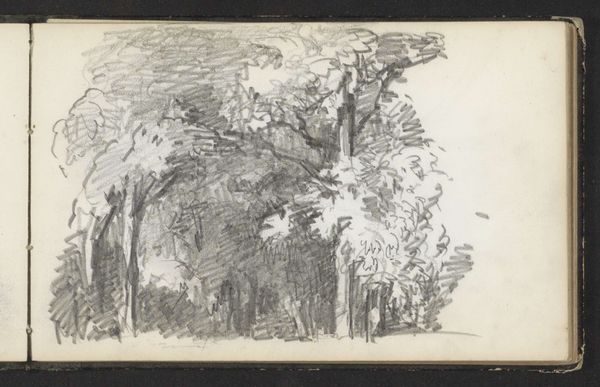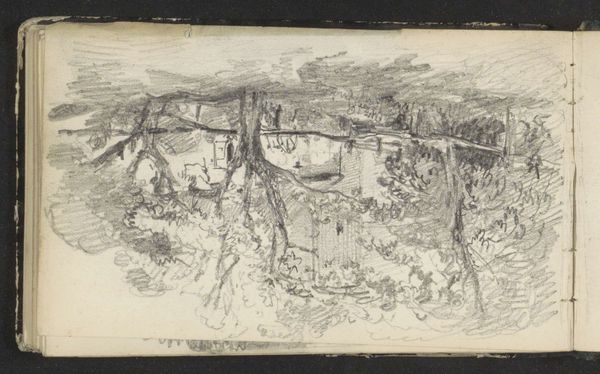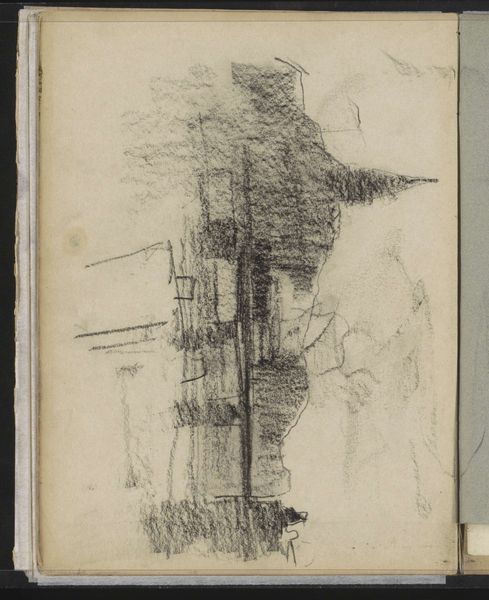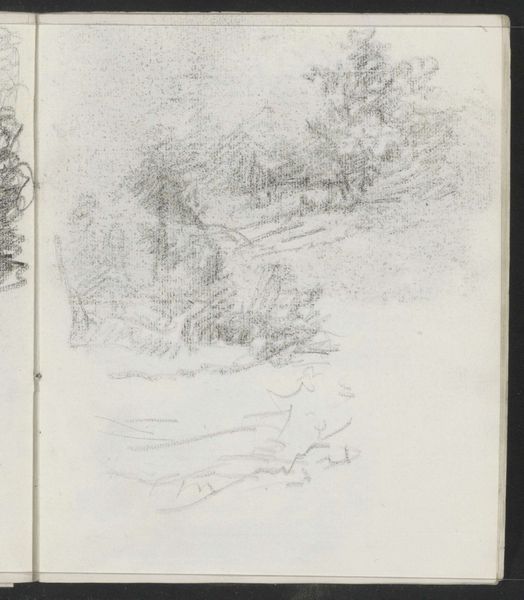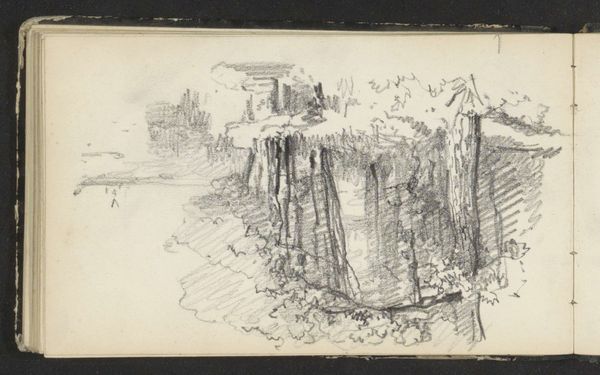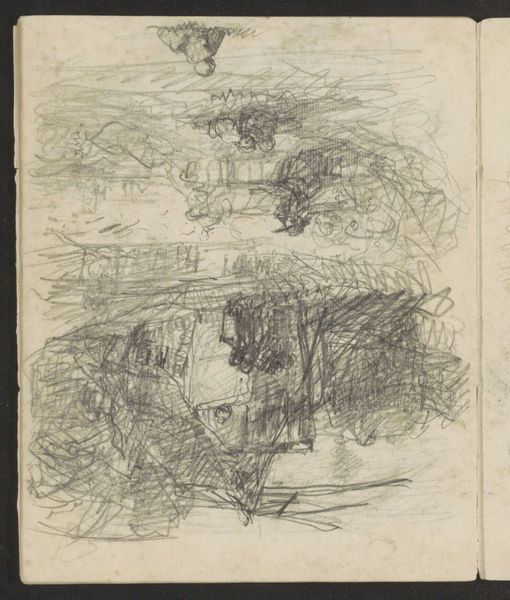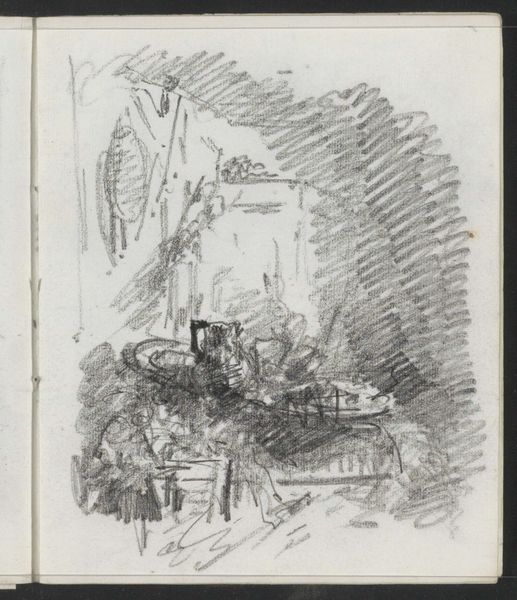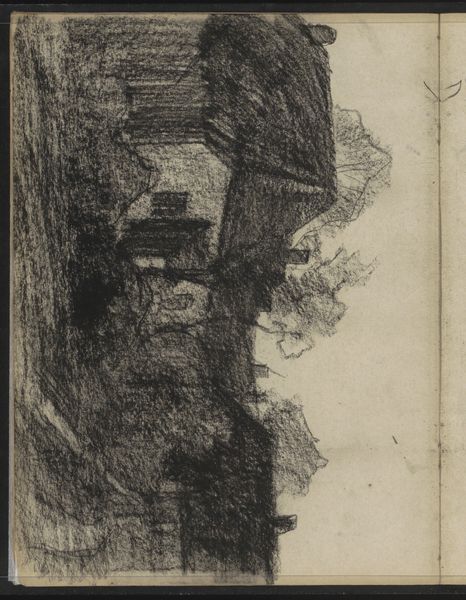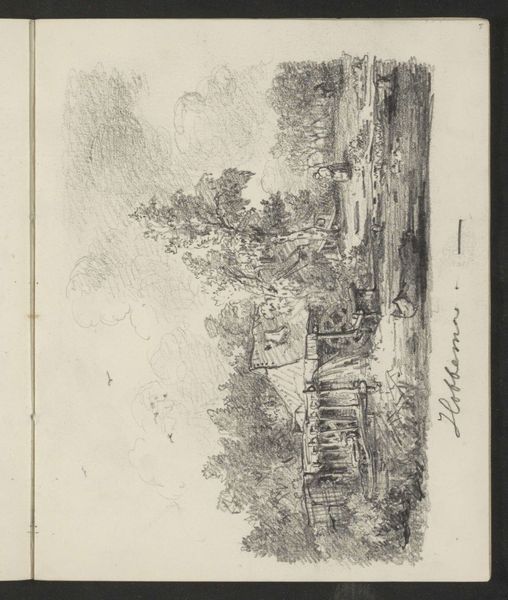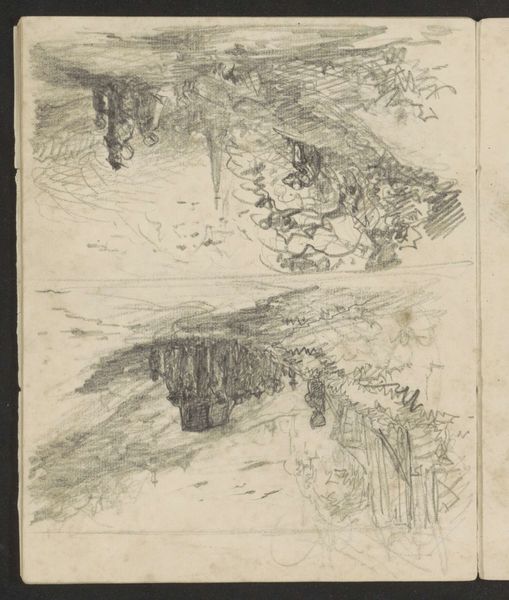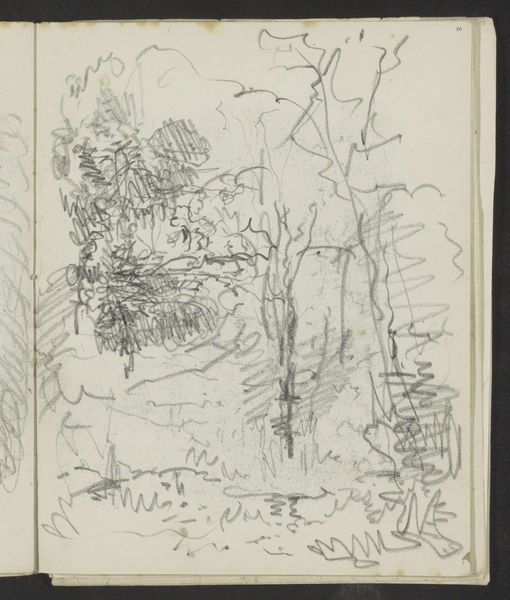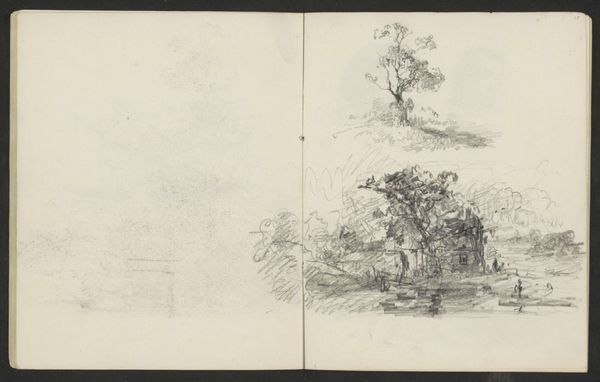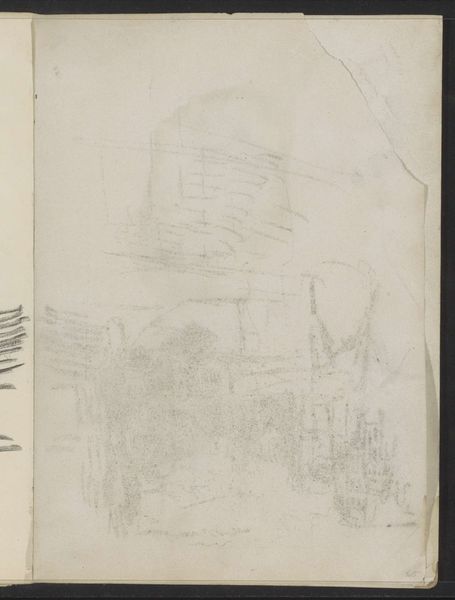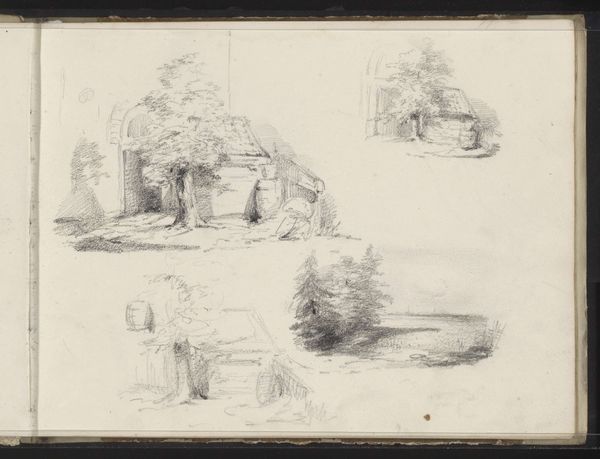
Landschap met water en een met planten overgroeide trap langs een huis 1834 - 1906
0:00
0:00
mariavos
Rijksmuseum
Copyright: Rijks Museum: Open Domain
Curator: Immediately striking! There’s something almost ethereal about this sketchy landscape. A hazy quality, like a memory fading at the edges. Editor: And a valuable glimpse into an artist’s process. What we see here is “Landscape with Water and a Plant-covered Stairway along a House” by Maria Vos. She worked on this piece between 1834 and 1906. It's a pencil drawing, currently held at the Rijksmuseum. Curator: I’m drawn to the contrast between the meticulously rendered stairs and the almost vaporous treatment of the water and foliage. What do you make of it? Editor: The romantic ideals of the time might have influenced it, which suggests the significance of nature's sublime beauty and the power it holds to shape emotions, even amidst a somewhat derelict built environment. Curator: Exactly, and the plant-covered stairway itself becomes a symbol. Think of a personal ascension, a spiritual reaching. Note how nature reclaims human spaces, creating this cyclical harmony. It hints at hidden knowledge, as it ascends to who knows where. Editor: From a historical perspective, sketchbooks like these provide insights into the artist's influences and even broader societal trends in appreciating the landscape. This might indicate new public accessibility and appreciation for previously unseen local views. Curator: I can imagine Vos stopping during one of these explorations. To catch the fleeting mood. What looks like an old well and fountain becomes a place of imagination. Editor: I’m struck by how something so seemingly simple on its surface becomes deeply layered through further contemplation. Maria Vos's hand lends beauty even to decay. Curator: For me it really highlights nature's capability to imbue our environments with spirituality. Editor: Indeed. It reminds us of the transient beauty all around us. And this single image reveals that even preliminary works offer much insight.
Comments
No comments
Be the first to comment and join the conversation on the ultimate creative platform.
